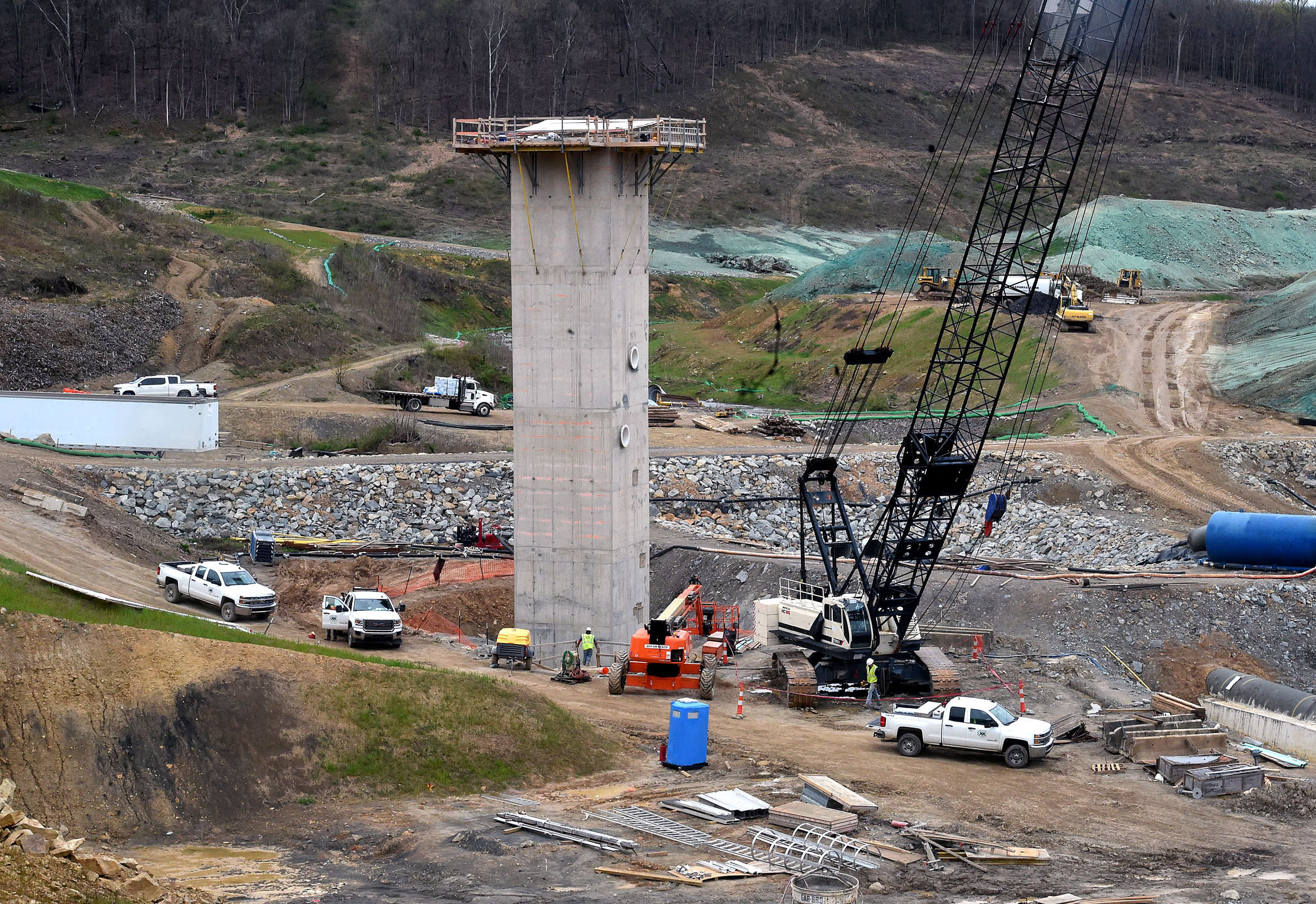MORGANTOWN — You might think building an earthen dam out of 500,000 cubic yards of clay-rich soil would require a lot of power, but relatively little precision.
You’d be wrong.
It requires plenty of both.
So much precision, in fact, that the blade on the bulldozer spreading layer after layer of soil in the dam’s core is constantly adjusted automatically, not by the driver, but through an array of GPS sensors.
A dam — some 400-feet thick at its base, 800 feet wide and 70 feet tall — is built no more than nine painstaking inches at a time.
And when it’s done, it’s going to hold back 370 million gallons of water — enough to provide water for the greater Morgantown area for an estimated 30 days.
“It really is amazing to watch,” Morgantown Utility Board Chief Engineer and Assistant General Manager Jim Fetty said, standing on a ridge overlooking a chaotic dance of trucks, tractors and construction equipment building the barrier that will contain MUB’s Flegal Reservoir.
The goal put before contractor Kanawha Stone is simple enough to understand, if not accomplish — finish the dam before winter.
In April 2020, winter 2021 was the anticipated completion window. At that time, MUB estimated the contractor was probably a year behind schedule.
In January, MUB pushed the completion date to June 2022, but put Kanawha Stone on the hook for all engineering costs tied to the delay.
“They’ve got a lot to do. They are extremely far behind. That’s just where we’re at right now, and that’s my position. Look, we’ve just got to get this thing up this year,” Fetty said. “The past is the past. Let’s get this thing up.”
It’s critical the dam is completed before this construction season ends, as it could take as many as 300 days to settle before final connections link the reservoir’s intake tower to the gravity-fed pipeline that will pull the water to MUB’s treatment facility.
Once those connections are made, there remains the small matter of filling the 50-acre lake.
And how?
“Nature,” Fetty said, explaining the trickle-to-torrent flow of Cobun Creek will do the job, eventually.
“Depending on the climate at that time, drought or rainy, it could fill faster or slower. We can only fill one foot a day. So when we start filling, we can put a foot in and stop for the day. We’ll have to regulate that by opening the pipe. It’ll be a balancing act,” he said.
But even in process, the undertaking is grand in scale — from the 70-some foot intake tower to the massive earthen barrier with permeable gravel core to the emergency spillway, wide as a four-lane highway.
Fetty notes the various types of natural material needed for the project are all being sourced from the 125-acre property, which was acquired by his predecessors at MUB decades ago for this very purpose.
“This is a very unique project. As an engineer, you love this because, if you’re lucky, you’ll see this one time in your career. The likelihood of someone else around here doing this … it’s too hard and it’s too complicated,” Fetty said. “I’ve seen hundreds of miles of pipe laid. I’ve only seen one dam built.”
The $50 million undertaking, which includes as a mitigation project a $2 million restoration of about 6,000 feet of Fike Run, in Preston County, was funded through rate increases for MUB customers in 2016.
TWEET @DominionPostWV




